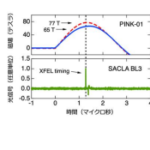2022-04-18 米国国立再生可能エネルギー研究所(NREL)
米国国立再生可能エネルギー研究所(NREL)の科学者たちは、この重要な問題に共同で取り組むため、宇宙での使用を目的としたペロブスカイトの耐放射線性をテストするためのガイドラインを作成しました。
<関連情報>
- https://www.nrel.gov/news/program/2022/scientists-decide-how-to-prove-out-perovskite-panels-for-space-power.html
- https://www.cell.com/joule/fulltext/S2542-4351(22)00131-3
ペロブスカイト宇宙船打ち上げへのカウントダウン:関連する放射線硬度実験のガイドライン Countdown to perovskite space launch: Guidelines to performing relevant radiation-hardness experiments.
Ahmad R. Kirmani,,Brandon K. Durant,Jonathan Grandidier,Nancy M. Haegel,Michael D. Kelzenberg,Yao M. Lao,Michael D. McGehee,Lyndsey McMillon-Brown,David P. Ostrowski,Timothy J. Peshek,Bibhudutta Rout,Ian R. Sellers,Mark Steger,Don Walker,David M. Wilt,Kaitlyn T. VanSant,Joseph M. Luther
Joule Published:April 11, 2022
DOI:https://doi.org/10.1016/j.joule.2022.03.004

Summary
Perovskite photovoltaics (PVs) are under intensive development for promise in terrestrial energy production. Soon, the community will find out how much of that promise may become reality. Perovskites also open new opportunities for lower cost space power. However, radiation tolerance of space environments requires appropriate analysis of relevant devices irradiated under representative radiation conditions. We present guidelines designed to rigorously test the radiation tolerance of perovskite PVs. We review radiation conditions in common orbits, calculate nonionizing and ionizing energy losses (NIEL and IEL) for perovskites, and prioritize proton radiation for effective nuclear interactions. Low-energy protons (0.05–0.15 MeV) create a representative uniform damage profile, whereas higher energy protons (commonly used in ground-based evaluation) require significantly higher fluence to accumulate the equivalent displacement damage dose due to lower scattering probability. Furthermore, high-energy protons may “heal” devices through increased electronic ionization. These procedural guidelines differ from those used to test conventional semiconductors.



